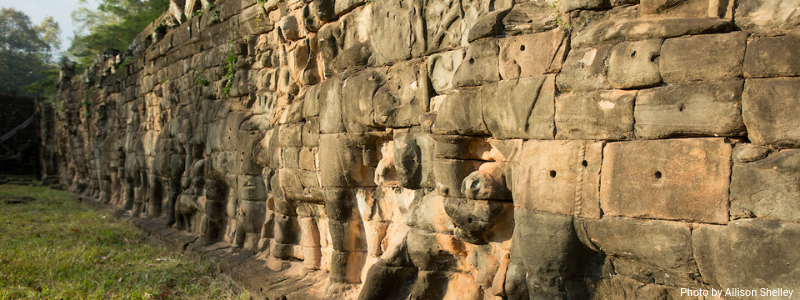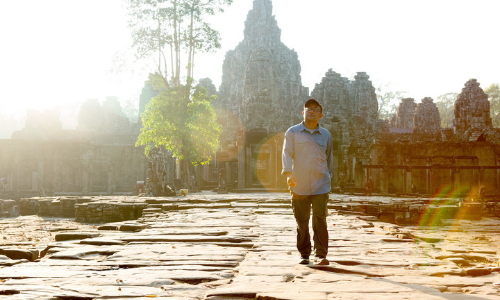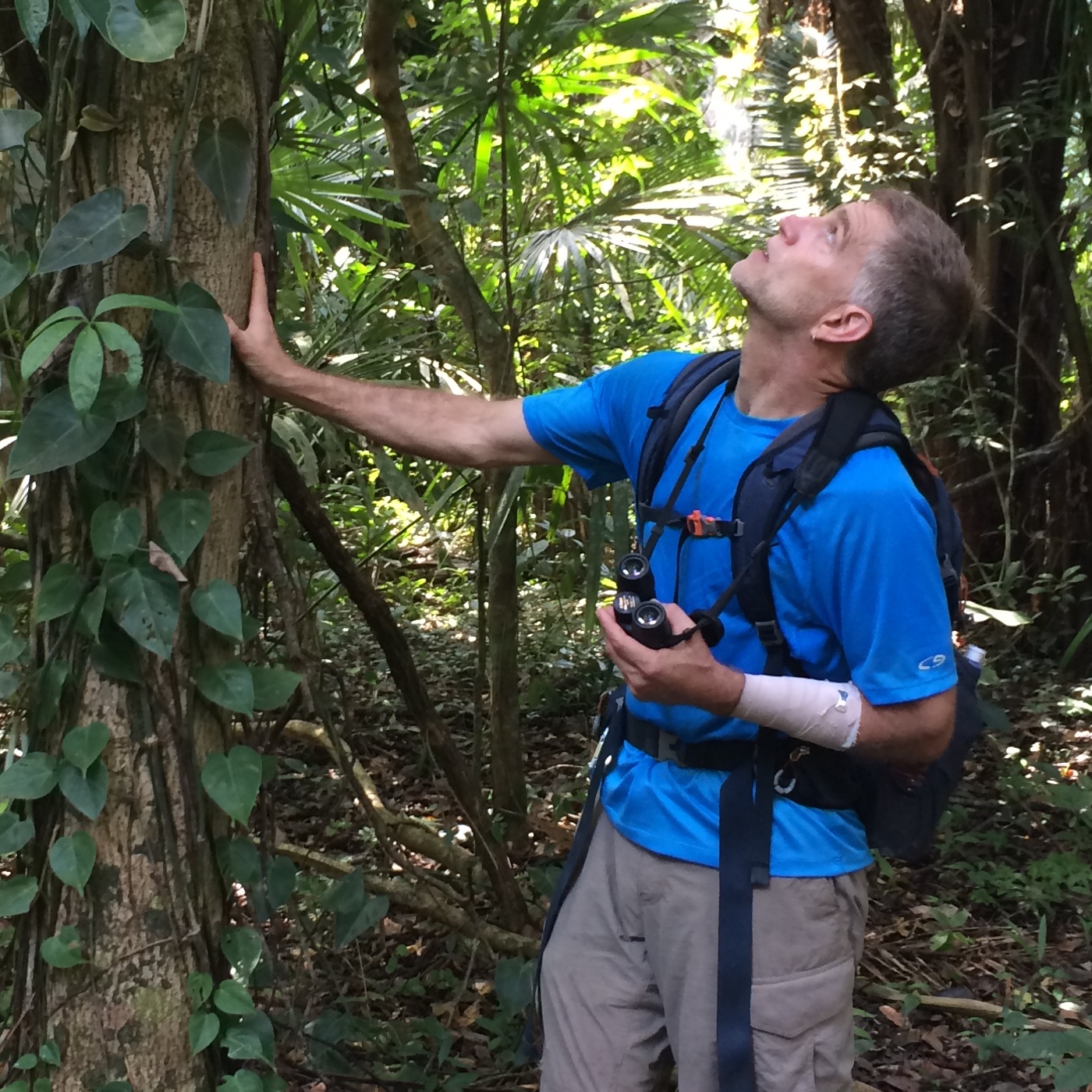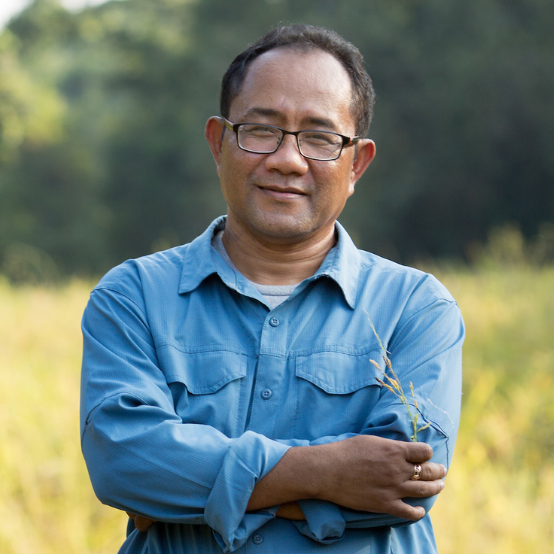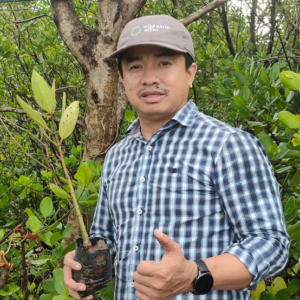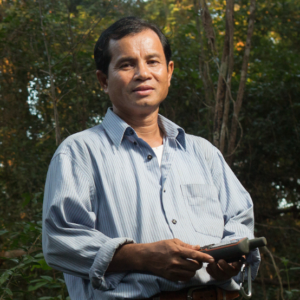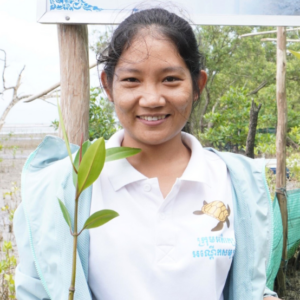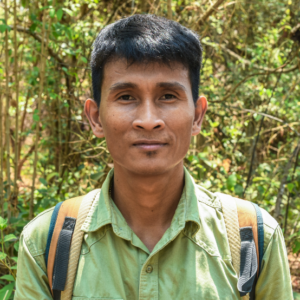Asian elephants have been integral to Khmer culture in Cambodia for millennia. Elephants feature prominently in the extraordinary temples of Angkor in Cambodia’s northern province of Siem Reap. Historians estimate that over 6,000 elephants were used in the construction of the Angkor Wat complex. UNESCO calls this complex one of the most important archaeological sites in Southeast Asia. Angkor was the center of the Khmer Kingdom for many centuries.
Wild Earth Allies Cambodia Program Director Tuy Sereivathana walks from the iconic Bayon Temple in the Angkor complex.
Photojournalist Allison Shelley captured powerful images of representations of elephants at the Temple of Angkor and the Bayon Temple of Angkor Thom, featuring Khmer art ranging from the 9th to 14th centuries. These depictions of elephants reflect the historic cultural significance of elephants to Khmer society.
Asian elephants are endangered across their range, but many Cambodians like our Program Director Tuy Sereivathana are committed to community-based conservation that will help ensure their survival.
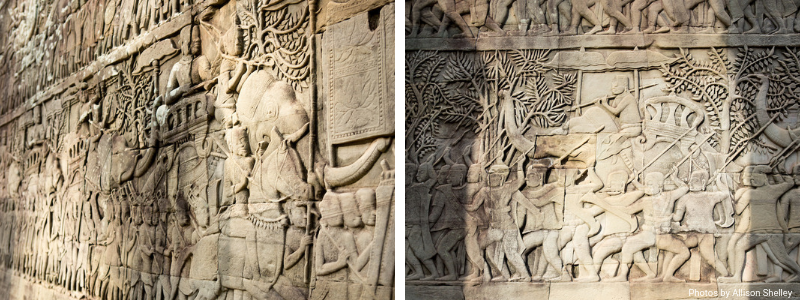 Bas relief at the Bayon Temple carved in the 12th or 13th century depicts elephants being used as transportation.
Bas relief at the Bayon Temple carved in the 12th or 13th century depicts elephants being used as transportation.
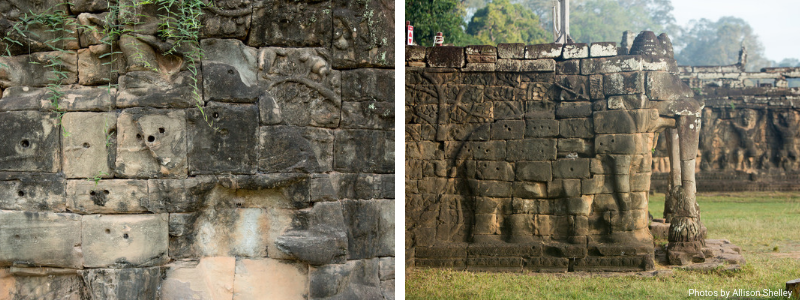 The 12th century Terrace of the Elephants depicts scores of nearly full-size elephants at Angkor Thom.
The 12th century Terrace of the Elephants depicts scores of nearly full-size elephants at Angkor Thom.
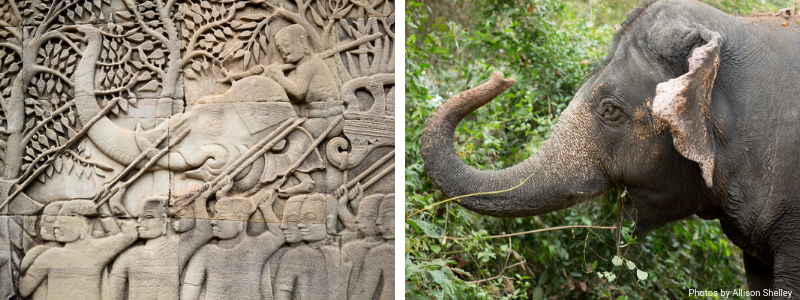 Bas relief (left); Asian elephant (right).
Bas relief (left); Asian elephant (right).
Our Cambodia program is led by Goldman Environmental Prize winner and National Geographic Emerging Explorer Tuy Sereivathana, who is building on 20+ years of successful community-based Asian elephant conservation.
Consider supporting this effort. Donate today.


